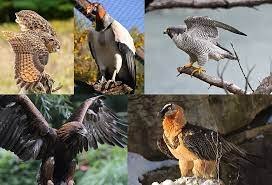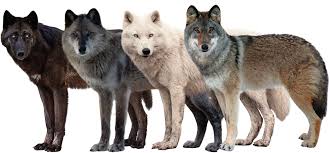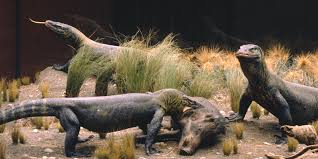From the vast savannas to the densest forests and the depths of the ocean, the animal kingdom is teeming with a diverse array of hunting strategies. While some species have evolved to work together in coordinated packs, others have honed the art of solitary predation. These lone hunters have developed unique adaptations and techniques that enable them to thrive without the assistance of a pack or pride.
In this exploration of the animal kingdom, we delve into the intriguing world of Animals Hunt Alone. From the elusive and solitary snow leopard, silently stalking its prey amidst the towering peaks, to the cunning and agile peregrine falcon, swooping down on unsuspecting birds in mid-flight, these creatures offer a fascinating insight into the balance between instinct, adaptation, and survival.
By understanding the hunting behaviors of these solitary creatures, we gain a deeper appreciation for the remarkable diversity of life and the complex strategies that have evolved to sustain it in an ever-changing world.
Definition of Solitary Hunting
Solitary hunting entails a solitary predator pursuing and capturing prey without the assistance of a coordinated group. This independent approach to hunting contrasts with cooperative strategies employed by social animals and relies on an individual predator’s inherent skills and adaptations to secure sustenance. Solitary hunters have evolved unique techniques and characteristics to optimize their success in capturing prey on their own.
Advantages and Challenges of Hunting Alone
Hunting alone offers distinct advantages to predators. Solitary hunters can avoid resource competition, ensuring that all acquired food benefits them directly. The element of surprise is often on their side, enhancing their ability to catch prey unawares. However, solitary hunting also presents challenges. These predators must be adept at locating prey on their own, and this can be especially demanding when targeting larger, faster, or more elusive animals. Furthermore, the absence of backup during confrontations with dangerous prey or competitors can increase the risks associated with solitary hunting.
Solitary Predators in the Animal Kingdom
Big Cats

Lions as Social and Solitary Hunters: Lions exhibit both social and solitary hunting tendencies. While pride collaborates to take down larger prey, lone lions often resort to hunting smaller animals when circumstances dictate.
Tigers’ Solitary Hunting Behavior and Adaptations: Tigers are quintessential solitary hunters. Their size, strength, and remarkable adaptations, including striped camouflage and powerful jaws, enable them to ambush and overpower a diverse range of prey.
Leopards’ Stealthy Approach to Hunting Alone: Leopards excel at solitary hunting due to their exceptional stealth, agility, and adaptability to various environments. Their ability to climb trees with prey offers protection from scavengers and competitors.
Birds of Prey

Eagles’ Solitary Hunting in the Skies: Eagles are solitary predators renowned for their sharp vision and soaring flight. They spot prey from great heights and use their powerful talons to seize it.
Falcons’ High-speed Solo Hunting Techniques: Falcons employ high-speed dives, or “stoops,” to swiftly strike and capture prey mid-flight. Their aerodynamic bodies and acute vision aid in this precision hunting strategy.
Owls’ Nocturnal Solitary Hunting Strategies: Nocturnal owls are adapted for solitary hunting in low-light conditions. Silent flight and exceptional night vision enable them to locate and seize prey such as rodents.
Canids

Wolves’ Complex Social Structure and Cooperative Hunting: Wolves are known for their complex pack structure and cooperative hunting strategies. However, lone wolves occasionally resort to solitary hunting to secure smaller prey or during periods of isolation.
Coyotes’ Adaptability to Solitary and Group Hunting: Coyotes display remarkable adaptability, switching between solitary and group hunting based on the availability of resources and prevailing conditions.
Foxes’ Diverse Solitary Hunting Techniques: Foxes are versatile solitary hunters, employing tactics such as stalking, pouncing, and scavenging to secure a wide variety of prey.
Reptiles

Snakes’ Solitary Ambush Hunting Tactics: Solitary snakes rely on ambush tactics, remaining hidden until unsuspecting prey approaches. Their venomous bites immobilize prey, making it easier to consume.
Crocodiles’ Solitary Approach to Hunting in Aquatic Habitats: Crocodiles are apex predators that use their aquatic environments to their advantage. They lie in wait underwater, lunging with incredible speed to seize drinking or unsuspecting animals.
For the continuation of the text, please see the next response due to space limitations.
Adaptations for Solitary Hunting
A. Stealth and Camouflage: Many solitary predators possess specialized coloration or patterns that help them blend seamlessly with their surroundings, ensuring they remain undetected by prey until the critical moment of attack.
B. Speed and Agility: Swiftness and agility are crucial for solitary predators that rely on chasing down fast-moving prey. These traits allow predators to close the distance swiftly and catch their prey before it can escape.
C. Specialized Senses: Solitary hunters often have exceptional senses, such as acute eyesight or hearing, that help them locate prey from a distance and plan their approach with precision.
D. Ambush Tactics: Ambush predators rely on patience and strategic positioning to catch prey off-guard. By remaining hidden and striking suddenly, they capitalize on the element of surprise.
Hunting Strategies and Techniques
A. Stalking and Pouncing: Many solitary hunters, such as big cats, employ stalking as a primary technique. They move quietly and stealthily, then pounce swiftly when within striking range, catching prey off-guard.
B. Pursuit and Chase: Some solitary predators, like certain canids, rely on their speed and endurance to chase down their prey over short or long distances until the prey is exhausted and can be captured.
C. Ambush and Surprise: Solitary predators often use ambush tactics, lying in wait until unsuspecting prey comes close enough for them to launch a swift and surprise attack.
Ecological and Evolutionary Considerations
A. Role of Solitary Predators in Ecosystems: Solitary predators play vital roles in maintaining ecosystem balance by controlling prey populations and preventing overgrazing or outbreaks of certain species.
B. Evolution of Solitary Hunting Strategies: Solitary hunting strategies have evolved in response to various ecological niches and available prey. The specific adaptations of solitary hunters reflect their unique survival challenges and advantages.
Challenges and Risks of Solitary Hunting
A. Predation Risk: Solitary predators face risks from both their prey and potential competitors. Without the support of a group, they must rely solely on their own defenses and abilities to protect themselves.
B. Scarcity of Prey: The success of solitary hunting is contingent on the availability of prey. In areas where prey is scarce, solitary predators may struggle to find enough food to survive.
Unusual Solitary Predators
A. Solitary Insects and Arachnids: Many insects and arachnids, such as certain spiders and mantises, are solitary predators that use stealth and ambush tactics to catch prey.
B. Solitary Marine Predators: In the depths of the ocean, solitary predators like the elusive giant squid use their unique adaptations to hunt alone and navigate the challenges of the deep sea.
Conclusion
The diverse world of solitary predators showcases the incredible adaptability and resourcefulness of these creatures. Through stealth, speed, and specialized tactics, they demonstrate the intricate balance between survival and predation. While hunting alone presents challenges, these predators have evolved remarkable strategies that enable them to thrive within their ecological niches.
From the solitary prowess of big cats and birds of prey to the cunning of canids and reptiles, the strategies employed by solitary hunters reveal the marvels of nature’s evolutionary craftsmanship. Understanding the complex interplay between these predators and their environments enriches our appreciation of the intricate web of life that sustains the natural world.
Reference:
- https://www.nationalgeographic.com/animals/mammals/facts/african-lion
- https://www.krugerpark.co.za/Kruger_National_Park_Wildlife-travel/kruger-park-wildlife-lions.html
- https://www.worldwildlife.org/stories/where-do-tigers-live-and-other-tiger-facts#:~:text=Do%20tigers%20live%20in%20groups,by%20the%20availability%20of%20food.

Rahul M Suresh
Visiting the Zoo can be an exciting and educational experience for all involved. As a guide, I have the privilege of helping students and visitors alike to appreciate these animals in their natural habitat as well as introducing them to the various aspects of zoo life. I provide detailed information about the individual animals and their habitats, giving visitors an opportunity to understand each one more fully and appreciate them in a more intimate way.









